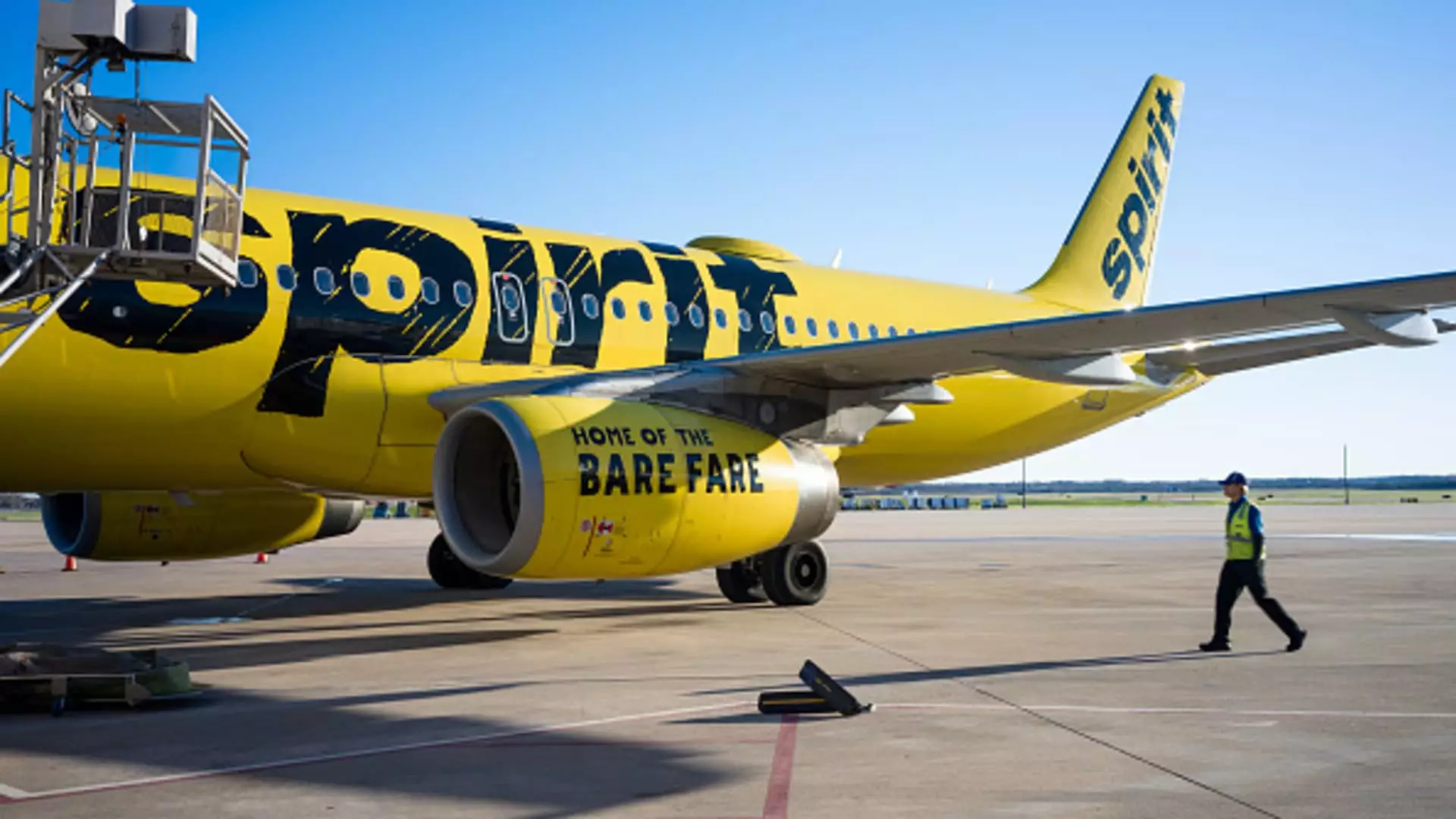Spirit Airlines has been navigating turbulent waters, particularly in its financial dealings and operational challenges. As of Friday, the airline announced it has managed to come to an agreement regarding a crucial extension on its debt refinancing timeline, now set to run until December. This development was particularly notable, as it came just hours before the original deadline was poised to lapse. However, the nature of this last-minute negotiation casts a shadow over the airline’s financial health and raises questions about its strategic decision-making processes moving forward.
In the week leading up to this announcement, Spirit Airlines drew down the full amount of its $300 million revolving credit facility, a move likely aimed at bolstering its liquidity, which is projected to exceed $1 billion by the year’s end. While this figure may initially sound reassuring, it is an indicator of the severity of its current predicament, showcasing the drastic measures taken to stave off further financial decline.
Despite these efforts, Spirit’s challenges have not abated. The airline has publicly acknowledged its involvement in ongoing discussions with holders of senior secured notes due in 2025 and convertible senior notes due in 2026. These negotiations highlight the critical state of Spirit’s finances as the company struggles to manage its existing debt, which raises concerns about its long-term viability. Investors responded adversely; the airline’s stock dipped to a new low, trading below $1.50 per share—reflecting a staggering decrease of more than 90% this year alone.
Further complicating Spirit’s situation is its operational strategy. The airline has enacted furloughs, significantly reduced scheduling, and deferred aircraft deliveries in an effort to retain cash flow. Such measures, while necessary, typically indicate a company in distress and could have long-term ramifications on its competitiveness within the airline industry.
Spirit Airlines is not merely contending with internal financial metrics; external factors have also had a profound impact. A significant issue has been the ongoing Pratt & Whitney engine recall, which has left numerous planes grounded. This situation not only restricts operational capacity but also hinders the airline’s ability to generate revenue during a crucial travel season.
Moreover, Spirit’s setbacks have been compounded by a failed acquisition plan with JetBlue Airways. This move, blocked by a federal judge on antitrust grounds, could have provided some much-needed stability; however, the collapse of this proposal has highlighted vulnerabilities in Spirit’s operational and strategic planning.
In the light of these compounding challenges, speculation surrounding a possible bankruptcy filing has begun circulating. Reports from credible sources suggest the airline may have to consider this drastic step as a means of restructuring and possibly starting anew. While bankruptcy may offer a lifeline, it also comes with its own set of challenges and impacts, including loss of confidence among consumers and stakeholders alike.
Spirit Airlines is at a critical juncture marked by financial strain, operational disruptions, and legal setbacks. As it strives to stabilize its operations and financial health, the next few months will be pivotal in determining whether it can navigate through these turbulent times or if it will succumb to the mounting pressures of the airline industry.

